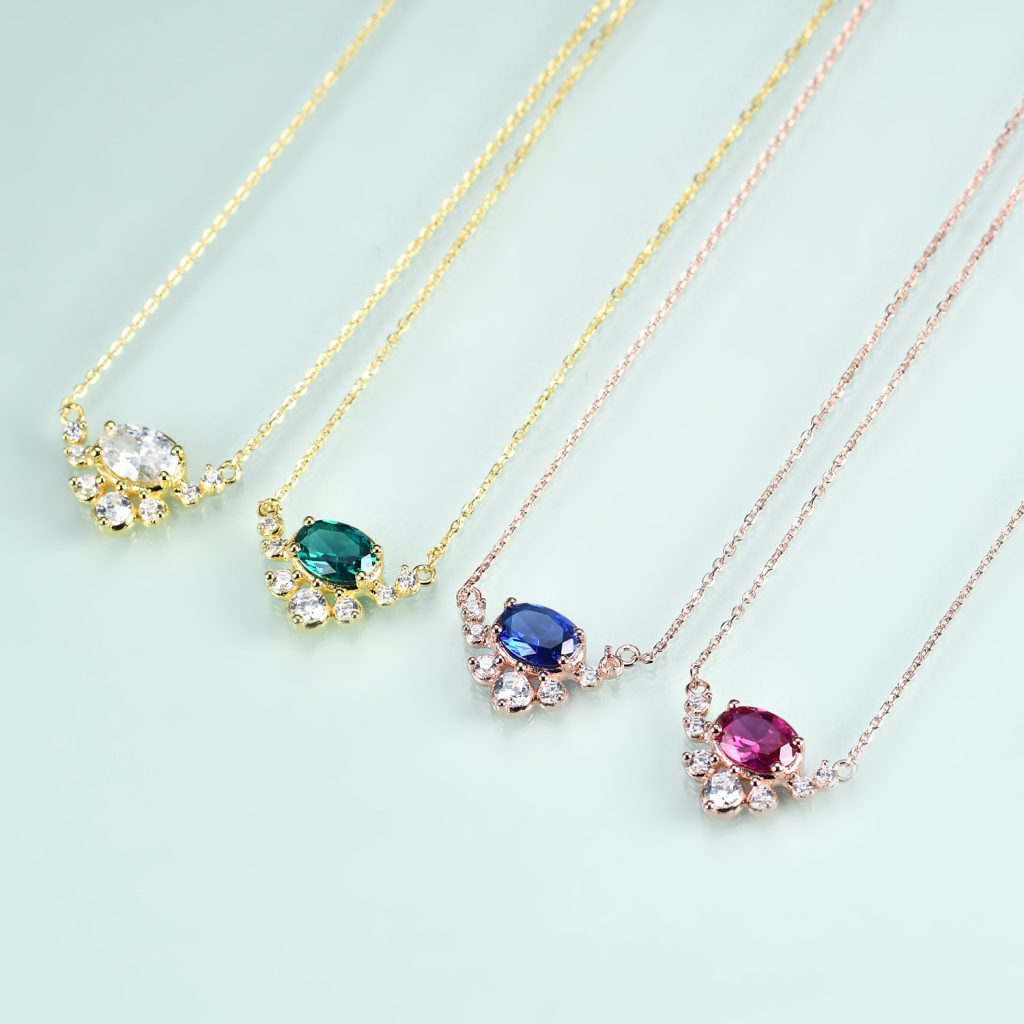Zircon vs. Emerald Jewelry: Fiery Brilliance vs. Regal Elegance
The choice between Zircon and Emerald jewelry is a study in contrasts: the dazzling, fiery performance of Zircon against the deep, verdant luxury of Emerald. One offers spectacular sparkle at an accessible price, while the other represents the pinnacle of classic prestige and value.
This guide delves into the key differences between these two distinct gems, helping you decide whether the brilliant fire of Zircon or the timeless elegance of Emerald is the right choice for your collection.
Zircon vs. Emerald: A Quick Comparison
| Feature | Zircon Jewelry | Emerald Jewelry |
|---|---|---|
| Chemical Composition | Zirconium Silicate | Beryllium Aluminum Silicate |
| Hardness (Mohs Scale) | 6.5 – 7.5 | 7.5 – 8 |
| Durability | Fair. Brittle; prone to chipping and abrasion. | Poor to Fair. Inherently included; requires careful setting and wear. |
| Refractive Index | 1.92 – 2.01 (Very High – Exceptional Fire) | 1.57 – 1.58 (Vitreous to Resinous Lustre) |
| Best Known For | High brilliance, fire, and affordability. | Rich green color, rarity, and luxury status. |
| Color | Blue, white, yellow, green, cognac. | Bluish-green to pure green |
| Price Point | $ – $$ (Excellent value for sparkle) | $$$$ – $$$$$ (Premium to Luxury Investment) |
1. Durability and Hardness: A Tale of Two Challenges
Understanding the durability nuances of each gem is critical for jewelry selection.
- Emerald Jewelry: With a hardness of 7.5-8 on the Mohs scale, Emerald is technically hard enough for jewelry. However, its toughness is typically poor. Almost all emeralds contain inherent inclusions and fractures (called jardin, French for garden). This makes them vulnerable to chipping, cracking, and damage from knocks, pressure, or sudden temperature changes. They require protective settings (like bezels or halos) and careful, conscious wear. They are not ideal for everyday manual labor.
- Zircon Jewelry: While also measuring 6.5-7.5 on the Mohs scale, Zircon is brittle. Its facets can become abraded over time, and the girdle (edge) is prone to chipping if struck. It requires more protective settings and careful wear than harder gems.
Jewelry Verdict:
- Both gems require care. Neither is a “wear without thinking” choice like a sapphire.
- For rings: Both are suitable for occasional wear rings. For daily wear, a well-protected emerald might be slightly more resistant to scratches, but zircon is less likely to fracture from internal strain.
- For pendants and earrings: Both are excellent choices as these settings minimize the risk of impact.
2. Appearance and Style: Fire vs. Jardin
This is the core of the decision: do you want sparkle or character?
- Zircon Jewelry: Zircon is prized for its outstanding optical performance. Its high refraction and dispersion create a sparkle and “fire” (rainbow flashes) that is exceptional and often compared to diamond. Blue zircon is the most popular choice, offering a vibrant, teal-tinged blue that is highly eye-catching. Its beauty is in its flawless brilliance.
- Emerald Jewelry: Emerald is celebrated for its color and character. Its value is in the depth, tone, and saturation of its iconic green hue. Unlike zircon, most emeralds are included, and these inclusions (jardin) are often accepted as part of the stone’s unique fingerprint, proving its natural origin. Its beauty is one of deep, luxurious color rather than fiery sparkle. It is typically cut in step-cuts (like emerald cuts) to maximize color, not brilliance.
Jewelry Verdict:
- Choose Zircon for maximum, eye-catching sparkle and a modern, brilliant look.
- Choose Emerald for a timeless, luxurious color presence, classic elegance, and unique character.
3. Color Variety: Blues vs. Greens
- Emerald: By definition, Emerald is the green variety of beryl. Its value is intensely focused on its signature bluish-green to pure green hue. The most prized color is a vivid, saturated green with medium to dark tone.
- Zircon: Offers a range of colors, though blue is most common:
- Blue: Vibrant and often heat-treated.
- Green: A rare and often muted olive green, distinct from emerald’s vivid green.
- Cognac/Brown & Yellow: Warm, earthy tones.
- Colorless/White: A brilliant diamond alternative.
4. Price and Value: Accessibility vs. Investment
The price difference here is the most dramatic of any comparison.
- Zircon is an incredible value for its brilliance. It provides a level of sparkle typically found in much more expensive gems for a very accessible price point. This allows for large, statement pieces on a modest budget.
- Emerald is a luxury gemstone. High-quality emeralds with a rich color and good clarity are exceptionally rare and can be more expensive than a diamond of comparable size. They are considered a long-term investment and hold their value well.
5. Symbolism and Meaning
- Emerald: Historically symbolizes rebirth, love, and wisdom. It was a favorite of Cleopatra and has been associated with royalty and romance for centuries. It is the birthstone for May.
- Zircon: Known as a stone of prosperity, virtue, and spiritual grounding. It is believed to aid in wisdom and is a birthstone for December.
The Final Verdict: Which Jewelry Should You Choose?
Choose Zircon Jewelry if:
- Your top priority is maximum sparkle, brilliance, and fire.
- You love the look of a vibrant blue or a brilliant white stone.
- Your budget is a primary concern, but you want exceptional beauty.
- The piece is for occasional wear (earrings, pendants, cocktail rings).
Choose Emerald Jewelry if:
- You are captivated by the deep, classic green and unique character of a rare gem.
- You value prestige, heritage, and investment value.
- You understand and accept the care requirements of a precious stone.
- You want a timeless heirloom piece that embodies luxury and romance.
Find Your Perfect Piece at JW Jewelry
Whether you’re drawn to the fiery appeal of Zircon or the legendary elegance of Emerald, our collections showcase the finest examples of both.


